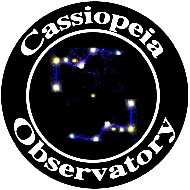
ASTROPHOTOGRAPHY WITH NIKON DIGITAL SLRs
Last updated: 31 December 2011
This page documents Nikon DSLR camera comments, tips, and photos. Search the site for "nikon dslr" for other items about the Nikon DSLR cameras. Contributions welcome.
Subject: M31 / Nikon D5100 & time to say thanks Sent: Saturday, December 31, 2011 10:47:59 From: my4all@gmx.de (my4all@gmx.de) thanks for having provided us with a free space to show and share our astronomy pictures on the 'Guest Photography Gallery' - which I have been using many times in the past 10+ years. Let me end-up my session with a Nikon D5100 shot of M31 on 2011-12-28. (Being a 'webcamer' I have hardly ever done astrophotography with the DSLR) I remember your great D7000 @ 300mm LX200-guided long exposure photo of M31 - but wanted to try a low-end version of it: - D5100 @ ISO3200 - 50mm Nikkor @ f/1.8 - 10 shots @ 4s - Tripod Capturing M110 / M32 and a touch of dark lane / spiral structure in the 'big one' at this short exposure astonished me (see M31_D5100.jpg) Even more astonished me the fact that each exposure with more that 4 seconds or ISO higher than 3200 was overexposed / showing less details. Well, that's life in the suburb garden of a million people city - it's not Cassiopeia / Oracle Observatory. Thanks again for your website - which I enjoy very much - and wishing you and Laurraine a healthy and prosperous 2012 with sunny days and lots of real dark nights, Dieter (from Munich, Germany)

Subject: Astrophotography, the Moon Sent: Thursday, December 29, 2011 04:42:27 From: S-O&M Auno (so.m.auno@bredband.net) I'm sending you a picture of the Moon (8 days old, first quarter). It was taken from my balcony in the centre of Norrkoping, Sweden at 1850 local time on the second of December. The picture was taken by my Nikon D5100 (300 mm zoom, 1/1000s - F/5,6). The picture was then considerably cropped. I hope you will find the picture interesting enough to post it on your web-site. Best regards, Sven-Ove Auno
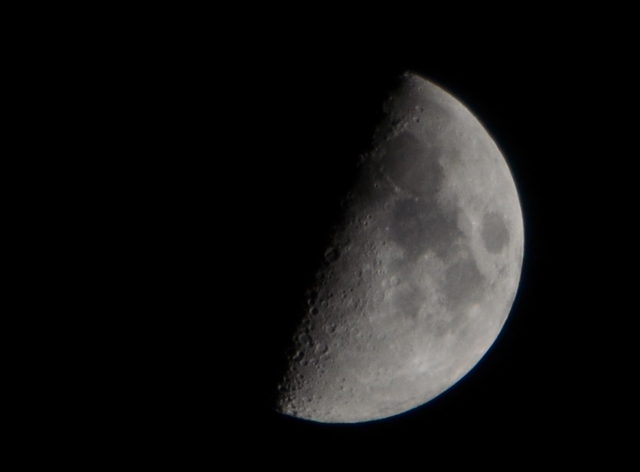
And:
I'm sending you a picture of the M 42 The Great Orion Nebula. It was taken from my balcony in the centre of Norrkoping, Sweden on Christmas Eve. The picture was taken by my Nikon D5100 on a fixed tripod (300 mm zoom, 1s - F/5,6, ISO 6400). The picture was then slightly cropped and the sky made a bit darker. I hope you will find the picture interesting enough to post it on your web-site. Best regards and A Happy New Year, Sven-Ove Auno PS. The picture of the first quarter moon I sent earlier was taken with ISO 400.
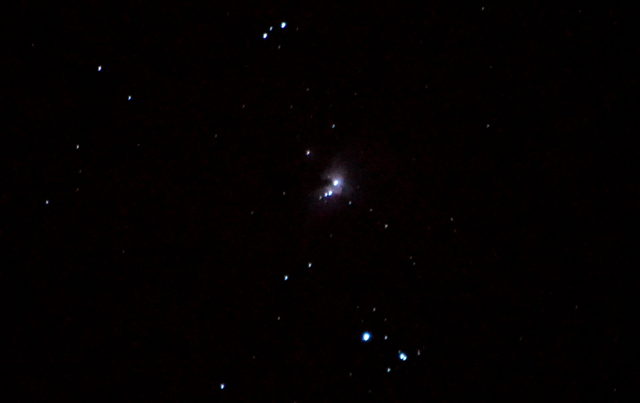
Subject: Re: Question regarding long exposures at d7000 Sent: Saturday, December 17, 2011 01:59:05 From: ?. ????????? (a@yankovskiy.ru) I have found the almost perfect solution for the long eposures photography. http://www.dealextreme.com/p/1-3-lcd-digital-timer-remote-switch-trigger-for-nikon-d90-d5000-2-aaa-54765 Bought such for both of my cameras: D200 and D7000. Works like a charm. Wish forget ML-L3 like a nightmare too! :) rgr. Alex.Mike here: Looks like a useful remote, with lots of options. I still like my Nikon ML-L3 wireless remote and use it frequently.
Subject: Nikon Live view in prime focus Astrophotography Sent: Sunday, November 27, 2011 09:48:20 From: Jim Beston (james_beston@sky.com) I have am setting up my Nikon D5100 for prime focus astrophotography with my LX200 GPS for the first time. I notice that the live view function on the camera appears to be disabled when the telescope takes the place of the camera lens and I can only view the scene through the viewfinder. Do you find this with your D7000? Do you know if there is a way to enable live view? Thanks JimMike here: Live View works fine on the D7000 when attached at prime focus using a T-Ring adapter. I use Live View for focusing with a Bahtinov Mask and for video recordings. I'd be surprised if it doesn't work on the D5100. What adapter are you using? Also, are you using M on the mode dial?
And:
Yes (M)Mike here: Unless there is some reason that NIkon disabled it on the D5100, it sounds like your T-Ring adapter is not properly telling the camera that a "lens" is attached. I don't recall any issues when I was setting up my D7000 for Live View with the T-RIng attached.
And:
The proper adaptor for the camera & scope. Tried it in daylight, viewfinder image ok. Lcd screen blank. Will try again in a few minutes The T ring clicked into place ok. So I assumed it was ok I will recheck Tnx.Mike here: Be certain you have a proper exposure setting; Live View shows the image based on the exposure settings.
And:
Well, it worked second time of trying. It may be that I removed the lens & replaced it with T connector whilst camera was switched on and that confused the camera. Anyhow all fine now and I was able to get a few photos of Jupiter & it's 4 main moons and play about with exposure & ISO settings, with & without field flattener attached. I have a long way to go before I establish the relationship between aperture / exposure / ISO rating, not to mention all the other features of this excellent camera. It is great fun learning though. Thanks again for your speedy help JimMike here: Glad it is working. I have inadvertently switched lens with the camera turned on. Sometimes it is ok and sometimes not. But not a good idea since bad things can happen if it is on.
Subject: Nikon D7000 Sent: Monday, November 14, 2011 19:12:37 From: Matt Funk (matt@funkisland.org) Hi Michael -- cool stuff on your D7000 set-up -- I happen to be helping my cousin set himself up with a D7000 for a trip to Chile next month -- we're going to spend a few days up in the Atacama desert and -- though we're complete amateurs, we hope to shoot a bit of the crystal clear night sky up there. I have a question for you -- we plan to use a fast 35mm lens (see our set-up, below) for some general nightscape photography, but I'm wondering if we should be thinking about taking along a telescope as well? How steep is the learning curve associated with a basic set-up along those lines? If you have time to offer a few words of advice, that would be great! Cheers! PS: Here's a link to a paper that you may find of some interest -- http://mpra.ub.uni-muenchen.de/20193/ -- I quoted my friend Jeff Kanipe's "Cosmic Connection" at length in this paper, think you may find those excerpts particularly interesting. Nikon D7000 Nikon 18-200mm VR II (with circular polarizer and clear filters) Nikon 35mm f/1.8 DX (with clear filter) Nikon ML-L3 wireless shutter release Nikon EN-EL15 battery (extra)Mike here: The D7000 DSLR will capture some great night sky photos when mounted on a tripod. Keep the exposures short (under 2 minutes and use an ISO of around 1600). For longer exposures you will need to track in Right Ascension. There are a couple of ways to do that: use a "barndoor" tracker or mount the camera piggyback on a polar mounted telescope (or just mount the camera on the telescope tripod). Of course, if you do take a telescope, you can also use the telescope as a very long telephoto lens by imaging at prime focus. For more on this, see the article "Astrophotography Types" on the Helpful Information: Astrophotography page.
Subject: D7000 in movie mode Sent: Sunday, November 6, 2011 11:19:34 From: Louis Marchesi (astro.geek@yahoo.com) I was looking around your website since I too upgraded from a D70 to a D7000. Even though I upgraded in March I've only recently tried the D7000 for astrophotography. My first attempt was relatively successful with the Moon at prime of my 130mm 'Gran Turismo' (f.l. 819mm). I did have to 'slide' the prime focus tube a bit out of the drawtube to get focus. Last night, I wanted to see if the D7000 in video mode was viable for Jupiter. So I stuck my 4x Powermate in the drawtube, then the prime focus adapter and then the camera. I could not see a thing. Then I tried an extender tube and then the prime focus adapter -- still no dice. Do you know if this type of setup could work? Is Jupiter too faint to be seen in the LiveView? I admit it could be pointing issue, but Jupiter was pretty near center without the Powermate .. Regards, Louis MarchesiMike here: Were you in manual video recording mode? If not, use that. And then you can see the effects of changing shutter speed and ISO. For planets and especially with a lot of magnification, you will need a slow shutter speed and/or high ISO.
And:
Thanks for the quick reply. I set manual movie mode and set the mode dial to 'M.' Movie quality 720p 30fps high. I could not set the shutter below 30fps, but I did 'crank' the ISO to 6400. I was able to record a movie without the Powermate (well, Jupiter is a tiny overexposed dot) but I did that to prove that something should have been on the camera screen. I know when I did this without the Powermate on the Moon I had to rack my focuser all the way out and then slide the prime focus adapter out even more to achieve focus. Maybe I just don't have enough back focus in this configuration. Thanks again for your help. Regards, LouisMike here: Insufficient back focus can be the problem. Try with the moon. For preventing the overexposure of Jupiter, use faster shutter speed and/or a moon filter. The faster the shutter speed, the more you can reduce the effects of blurring due to seeing, which is a problem with planetary imaging.
Subject: Question regarding long exposures at d7000 Sent: Sunday, September 4, 2011 16:41:02 From: a@yankovskiy.ru I'm just starting my journey into the world of astrophotography and experiencing some troubles. 1st of them is that I can't find the way to make really long exposures photos (1min+) with my D7000. Could you,please, advise me, how did you make your 5 minutes exposures? The only receipe I've found is to use external digital shutters as NKRemote can't extend Nikon's standard 30 sec exposure time. Thanks in forward. Alexander.Mike here: See my D7000 review; I discuss using the ML-L3 wireless remote there and how to do long exposures. If you don't have a remote, you can hold the shutter open by using the shutter release button on the cameras. As long as the shutter button is held down, the shutter will remain open, letting you do very long exposures. HOWEVER, holding the button down with your finger will induce vibrations that will show up as blurring in your images. So using a remote is better.
Subject: Problems with Nikon D7000 while long time exposures Sent: Thursday, July 7, 2011 05:26:20 From: Hensel, Angela (Sternli@Astrotreff.de) I have found your website while searching for astronomical pictures taken with the new Nikon D7000. Your pictures are just fantastic. Even they are unedited. Now I bought this camera 3 month ago and I tried out taking some astronomical pictures. At home I discovered that every picture has a red bound on the right side. At this night it was very cold, we were at 1600m and yeah well, around 4 degree. I didn't do pictures all night, so I don't think the camera got too warm. But I still wonder where does this red color come from? Did you ever have those problems with your Nikon? Here are 2 pictures of this night: http://content.wuala.com/contents/STERNLI/PUBLIC/20110703_005240k.jpg ISO 1600, 30sek. http://content.wuala.com/contents/STERNLI/PUBLIC/20110703_004606k.jpg ISO 5000, 30 Sek. As you can see, it get's brighter the higher you set the ISO. I took a picture at home, everything closed, no light, with ISO 1600 and 30sek exposure. This is the result: http://content.wuala.com/contents/STERNLI/PUBLIC/20110706_160942k.jpg Hopefully those links work, if not just tell me. I would be glad if you can give me any hint, if this is normal or not. I am a little bit worried. Thanks for everything in advance. Hoping for your response and greetings. AngelaMike here: Yes, some "noise" is normal at high ISO setting. Your last image (with the lens cap on?) shows one of the reasons that many astro-imagers take a "dark frame", which is then subtracted (via software) from images of the sky. Personally, I don't do that (too lazy, I guess), but what I do is edit the "levels" to remove unwanted color. Of course, some objects have red so I don't take out all of the red (or green or blue, as appropriate). You can see many examples of my D7000 DSLR astrophotography on my Cassiopeia Observatory web site.
And:
Yeah, I know that noise is normal at high ISO settings. But 1600 isn't that high and I had the noise reduction on. I thought that means, that the camera takes a dark frame too and subtracts it. And the results are those pictures. I have this red border on every picture. I have seen many of your pictures. You have made very long time exposures but nowhere you have this red border. And 5 Minutes exposures are really long! Only 30 seconds here. I have also spoken with other guys that have a D7000, they made the same picture, with the same config. Result: No red border. For me a sign, that there is something wrong with my camera. Thank you very much for your fast answer! I'll just have a look what those guys from the Nikon Service will say about it. :) Greetings AngelaMike here: There is "noise" (colored "sparkles") and noise (unwanted artifacts, like color). NR attempts to remove the "sparkles". But with NR ON, it does take a "dark frame" so should have removed any unwanted color cast that is evident in the dark frame. I just did your test (30s, ISO 1600, lens cover on). Here's the results.

This next image has had the Luminance turned all the way up:
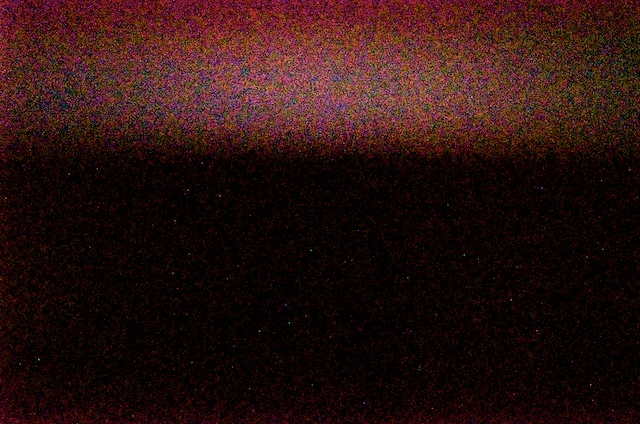
This shows the histogram of the unedited image:
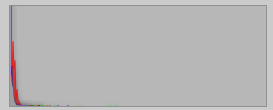
So, it does appear that your camera is getting too much red in the image. Have you applied the firmware update that was released a few months ago? I don't recall it addressing this problem but I believe it did do something with Noise Reduction. I don't use in-camera Noise Reduction.
And:
Yeah I did this firmware update. Version 1.02. Maybe there is something getting warm inside so the chip gets too much infrared light. Maybe the sensor. I'll let it check out. :) Thank you very, very much for your tests. Now I can tell them, that I had a comparison. :) Without comparing it you can't say if it is normal - could have been - but now I'll fill out the papers and send it to Nikon. If you want I can give you a feedback what it has been. Thanks again! You helped me a lot! Greetings AngelaMike here: Just curious: are you shooting Raw or JPEG? I use Raw and do image processing in Aperture.
And:
I set the camera to do both at the same time, because ... I am lazy ;) So, there is no converter between it. Do you think this has something to do with it?Mike here: JPEG does have some problems since it has to throw out a lot of information in the image.
And:
Well, I have compared RAWs and JPGs, but I can assure you: this needless red information is on both. No difference...
Subject: Nikon D90 for wide field photography Sent: Saturday, May 7, 2011 03:12:27 From: iamia (iamia@internode.on.net) I am looking at purchasing a Nikon D90 to do wide field work on a tripod and to also mount on a 10"ACF LX200 for moon shots. I have seen your great work with the D70 and was wondering if you could provide any advice (what do you think of this camera) on the D90. Thanking you in advance and clear skies, Peter Adelaide, AustraliaMike here: I recently upgraded from my old D70 to the new D7000 DSLR. Check out my comments on the Helpful Information: Astrophotography page. At this point, I would suggest you consider the D7000 instead of the older D90.
Subject: D7000 Sent: Saturday, March 26, 2011 15:22:16 From: Steve Spurgeon (twobigpipes@gmail.com) I just looked at your D7000 images , looks very clean at high ISO. I am a nikon user as well , D70..D2X D200 D300 D700....I just recently bought a C8-SGT , I have just had one opportunity so far with the Moon with eyepiece projection...it was great fun...I recently ordered the Nexguide , I have heard some good things , I will have it Tuesday along with a 80mm Orion shorty refractor. I am curious about video with the D7000 for astro , how would that work for processing , I too use mac exclusively . I have been toying with the idea of CCD , but maybe the D7000 might fill the bill. I would like to hear from ya about the astro with the D7000 , and I hope you are having fun with it Thanks ! Steve Spurgeon I am in the St Louis , Mo areaMike here: Keith's Image Stacker (link on the Astronomy Links page) will stack video files from the D7000 (or iPhone) on the Mac. I've only did a little video processing in KIS but hope to do more. In fact, I've very little D7000 video work (for stacking) as the high ISO settings in the D7000 DSLR are so good for DSOs. I do plan to do some video and stacking for Saturn images soon.
And:
I have heard of Keiths , that is mentioned on Stormy Nights and other places , you are right about the image quality , it looks very impressive. It looks like I may have to add the D7000 body to my collection.Mike here: The Nikon D7000 DSLR is an impressive general purpose camera, as well as a pretty darn good astrocamera.
Go to the 2010 Nikon DSLR Discussion page.
Go to the 2009 Nikon DSLR Discussion page.
Go to the 2008 Nikon DSLR Discussion page.
Go to the October-November 2007 Nikon DSLR Discussion page.
Go to the February-September 2007 Nikon DSLR Discussion page.
Go to the 2006 Nikon D70 Discussion page.
Go to the 2005 Nikon D70 Discussion page.
Go to my Nikon D70 Astrophotography page.
Go back to the Astrophotography Page.
Go back to my ETX Home Page.